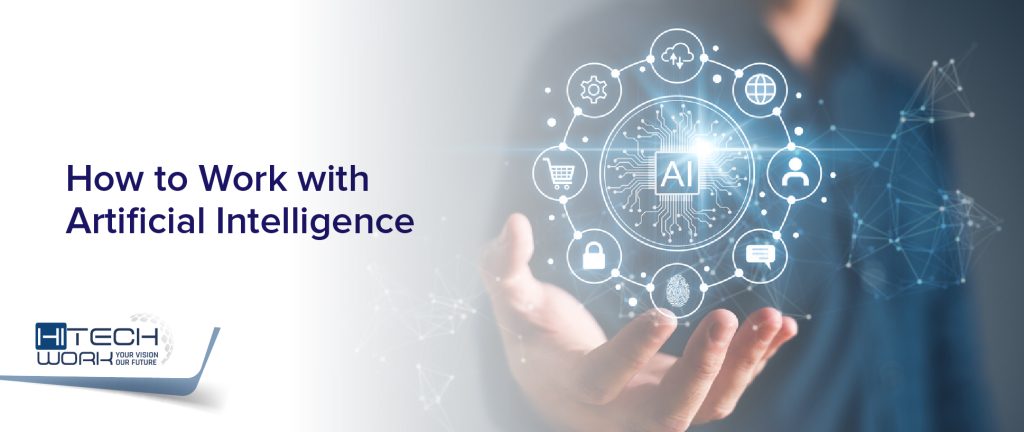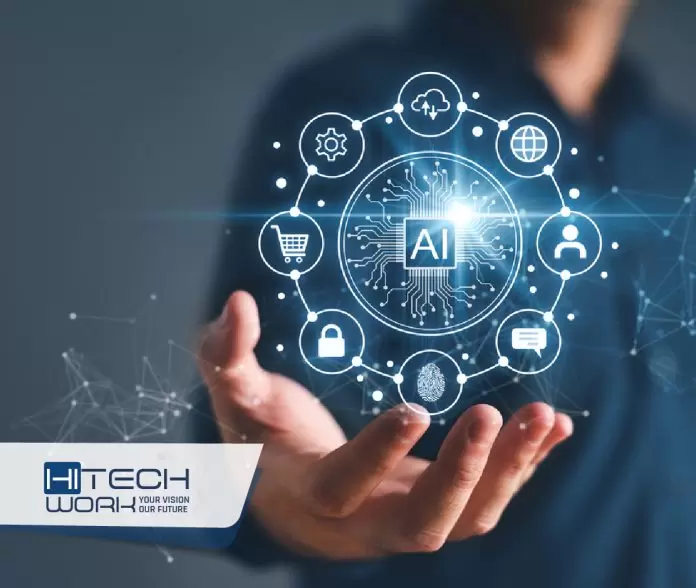There is widespread misunderstanding about the current state of artificial intelligence (AI) development. Unfortunately, marketers eager for profit fuel this confusion, perpetuating the misconception that sentient tech products are available for purchase. This misinformation misguides the public, fostering unrealistic expectations about AI’s capabilities.
In reality, achieving true AI remains a distant goal for developers. Our current AI capabilities are better described as machine learning (ML). This article delves into how to navigate and work with today’s AI effectively, shedding light on what companies can realistically anticipate in the foreseeable future.

The Advantages of AI in Business
When delving into the sphere of AI, it’s crucial to recognize the diverse benefits available beyond mere automation. Companies embracing this technology can harness the following advantages:
1. Enhanced Speed
ML facilitates optimal business process optimization, accelerating decision-making, expediting complex tasks, and efficiently handling routine activities. Even software developers continually enhance operations through ML algorithms to boost overall speed.
2. Advanced Monitoring
Whether enhancing patient surveillance, automating video monitoring, or overseeing critical databases, AI enables the swift detection of changes as they occur. Responses can be manual or automatic, ensuring proactive management.
3. Reduced Human Error
While human error is inherent, AI systems exhibit remarkable accuracy and increasing sophistication, minimizing errors in various operations.
4. Heightened Productivity
Strategic, targeted automation leads to substantial ancillary benefits, allowing the workforce to concentrate on core company priorities.
5. Business Model Expansion
ML and AI — inherently disruptive technologies — possess the potential to entirely reshape traditional business models, presenting opportunities for expansion and innovation.
A Closer Look at AI Advancements: The Genesis of DeepMind
Exploring the origins of DeepMind, a prominent AI endeavor currently under Google’s ownership, proves insightful in gauging our present AI landscape. The project’s foundation lay in the simple belief that if computers could emulate human excellence in logic and mathematics, other aspects would seamlessly follow suit.
Demis Hassabis, the visionary behind DeepMind, drew inspiration from IBM’s Deep Blue, which emerged in 1997 as the unrivalled world chess champion after defeating the human title holder in a remarkable six-game rematch.
In 2016, DeepMind elevated this trajectory by conquering Go, a game hailed as the most intricate known to humanity. However, it’s crucial to note that the AI’s triumph hinged on the specific complexity of Go; simplifying or reducing the size of the board even slightly would have led to the AI’s humbling defeat. This underscores a fundamental truth: AI systems remain inherently dependent on the information humans provide.
The Role of Human Trainers in AI Systems
Most AI systems rely on human trainers. Human involvement is integral to training ML algorithms, a process essential for various applications. It involves the creation of training data, which is necessary for instructing medical applications in disease detection, enabling voice assistants to comprehend everyday expressions, and supporting recommendation engines in guiding users towards informed financial decisions.
Furthermore, AI systems require training to interact with humans effectively. Consider Amazon’s Alexa as an example; developing her tone and personality — a mix of helpfulness, confidence, and a touch of cheekiness — demanded extensive training. Achieving these features involved dedicated efforts from a diverse team of skilled professionals, investing significant hours of hard work.
As chatbots and voice assistants increasingly facilitate human communication, it becomes imperative for developers to establish ethical norms for AI. While automation enhances human capabilities, there is a risk that AI systems, lacking education on bias, may unintentionally contribute to discrimination, underscoring the need for ethical considerations in AI development. Addressing these ethical considerations is imperative to foster a technologically advanced and socially responsible AI landscape that positively contributes to human interactions without inadvertently reinforcing discriminatory practices.
Human-AI Collaboration: The Benefits of AI for Different Sectors
Human-AI collaboration presents a transformative paradigm. This partnership, characterized by the seamless integration of intelligent machines and human skills, enhances efficiency and fosters innovation, unlocking new possibilities and advancements across diverse industries.
Manufacturing
Integrating AI into manufacturing processes has sparked remarkable collaboration between humans and machines. Traditional heavy-duty robots are transforming into intelligent and context-aware collaborative robots (cobots), marking a significant evolution. For instance, a cobot could handle repetitive tasks requiring heavy lifting, allowing a human to focus on complementary activities demanding dexterity and judgment, such as assembling intricate machinery components.
This seamless partnership has resulted in a substantial proliferation of innovative ideas, especially in data-intensive sectors. The AI economy is poised for significant growth, given that AI systems enhance analytical capabilities across virtually every industry, offering cutting-edge automation solutions for startups and established businesses.
Healthcare
AI technologies have ushered significant advancements into healthcare settings. Through the application of computer vision (letting a computer ‘see’ the world and identify objects, people, or places based on input from a camera) and image classification (teaching an AI how to detect objects in an image based on their unique properties), machines can accurately identify objects, people, colours, and their spatial relationships. When combined with modern Natural Language Processing (NLP) tools, computers can even articulate the content of images presented to them in words.
For example, automating blood cell counts facilitates more precise oncological diagnoses. Doctors can swiftly and accurately identify infections and potentially save lives through prompt intervention. AI also offers other notable advantages, such as assistance with surgical procedures, contributing to enhanced precision and efficiency.
AI applications also extend to mental health support, providing innovative solutions and tools to address psychological well-being. AI brings multifaceted advantages to the healthcare landscape.
Education
ML is poised to revolutionize education, particularly regarding personalized learning. AI equips schools with insights into how students absorb information, empowering teachers and educators to tailor the curriculum to individual learning styles. Additionally, intelligent moderation enhances the efficiency of tutors, moderators, and teachers by analyzing vast group data and making informed decisions based on the received feedback. The integration of AI also extends to custom textbooks, allowing educators to import syllabi and generate textbooks containing essential educational content. Furthermore, intelligent tutoring systems leverage sophisticated algorithms to educate pupils in the absence of direct teacher intervention.
Finance
ML and AI-based solutions swiftly detect fraud by identifying pattern irregularities in the financial domain. It involves continuously monitoring and scoring tens of millions of transactions daily, utilizing data on customer behavior, purchase locations, IP addresses, and other relevant information. Additionally, these technologies contribute to increased cost savings by implementing chatbots for customer support, enabling companies to provide round-the-clock customer interactions.
Society
In societal terms, the positive implications of integrating AI into various domains are becoming apparent. AI is currently adept at handling monotonous tasks that often result in human dissatisfaction, freeing us to focus on more fulfilling and creative endeavours.
Moreover, AI facilitates governmental decision-making by utilizing real-time data and amalgamating information from diverse sources, thereby enhancing adaptability, survival rates, and societal resilience. Most notably, AI lays the groundwork for a fully realized circular economy, promoting a future built on sustainable and robust foundations, ensuring the continued survival and well-being of the human race.
The Future of Working with AI
AI will solely rely on the level of sophistication we embed into it. While there is a semblance of perceived intelligence, it emulates more of a professional illusionist’s attempt to convince, lacking organic attributes and not mirroring the intricate functioning of the human brain. Despite this, concepts such as natural language processing, computer vision, and intelligent feedback indicate a promising future for ML software applications.




![How to Reverse a Video on Instagram? [2024 Ultimate Guide] how-to-reverse-a-video-on-instagram](https://psppi.unisba.ac.id/?big=wp-content/uploads/2024/03/how-to-reverse-a-video-on-instagram-1-218x150.webp)

